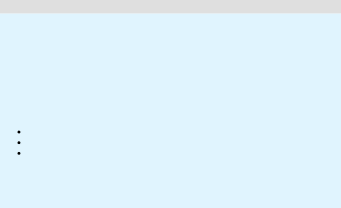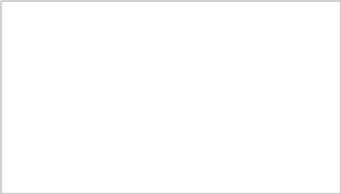Form 1 Discretionary Grant FOA Announcement
ACL Funding Opportunity Announcement
FINAL2017 FOA Template
ACL Funding Opportunity Announcement
OMB: 0985-0018
2016 ACL STANDARD TEMPLATE - EDIT VERSION
 Additional
Overview
Content/Executive
Summary
Additional
Overview
Content/Executive
Summary
If the announcement is long or complex, staff may wish to include a short executive summary before the full text (e.g., concise description of opportunity, total amount to be awarded, who is eligible).
Text Field: Executive Summary
 Funding
Opportunity
Description
Funding
Opportunity
Description
This section must include a complete description of the program or project activities and area of interest for which applications are being sought. It should adequately describe the funding opportunity in plain language. The statutory authority and governing program regulations, if any, must be specified in this section.
This section is also where you will want to discuss specific populations, including underserved populations, to be considered. Discussion should be generic enough to provide reader with direction but not so specific that it appears the agency is requesting applicants to target specific ethnic groups etc. See section IV., 2.b, Special Target Populations and Organizations.
The following additional information also may be included in this section: a-program funding priorities, b-whether this is a new program or, if not, past experience under the program or initiative and any changes, c-relation to Presidential or Secretarial priorities, d-any related programs or initiatives.
Text Field: Funding Opportunity Description
Statutory Authority
Statutory Authority
Award Information
Funding Instrument Type:
Currency Input Field - Estimated Total Funding Numeric Input Field - Expected Number of Awards
Currency Input Field - Award Ceiling Currency Input Field - Award Floor
 Length
of
Project
Period:
Length
of
Project
Period:
12-month project and budget period 18-month project and budget period
24-month project with two 12-month budget periods
36-month project with three 12-month budget periods
48-month project with four 12-month budget periods
60-month project with five 12-month budget periods Other
Additional Information on Project Periods and Explanation of 'Other'
Text Field: Project Period Explanation Other
 This
section must
provide an
indication of
the potential
funding under
the funding
opportunity announcement.
The information
provided in
this section
must be
consistent with
any information
provided in
the synopsis
for the
data elements
related to
funding. This
must be an
estimate of
the aggregate
amount of
Federal funds
expected to
be available
for award
(current year
and, if
available, future
years), the
anticipated number
of awards,
the dollar range,
including funding
floor and
ceiling amounts,
of individual
awards (specifying
whether on
an annual
or overall
project basis),
anticipated start
date and
the expected
duration of
support, i.e.,
length of
the competitive
segment. If
no funding
floor is
provided, OGM will
include an
estimated amount.
This information
is especially
important for
an applicant not
only to
determine whether
to apply
but also
for its
preparation of
an application scope
and budget
consistent with
ACL expectations.
This
section must
provide an
indication of
the potential
funding under
the funding
opportunity announcement.
The information
provided in
this section
must be
consistent with
any information
provided in
the synopsis
for the
data elements
related to
funding. This
must be an
estimate of
the aggregate
amount of
Federal funds
expected to
be available
for award
(current year
and, if
available, future
years), the
anticipated number
of awards,
the dollar range,
including funding
floor and
ceiling amounts,
of individual
awards (specifying
whether on
an annual
or overall
project basis),
anticipated start
date and
the expected
duration of
support, i.e.,
length of
the competitive
segment. If
no funding
floor is
provided, OGM will
include an
estimated amount.
This information
is especially
important for
an applicant not
only to
determine whether
to apply
but also
for its
preparation of
an application scope
and budget
consistent with
ACL expectations.
Address the type of applications sought, e.g., new and/or competing continuation applications or competing supplemental applications.
Indicate whether grants and/or cooperative agreements are anticipated. If cooperative agreements are anticipated, this section or a referenced attachment must include the complete terms and conditions of the cooperative agreement and a statement of ACL’s anticipated substantial involvement specific to the type of activities that are the subject of the funding opportunity announcement. By including the complete terms and conditions of the cooperative agreement in the Program Announcement, language can be added to the Notice of Award (NoA), which makes the terms and conditions effective immediately upon award notification and eliminates the need for the grantee to sign anything.
If the statement of ACL’s anticipated substantial involvement and the terms and conditions are not included in this section, this section must provide a cross-reference to the detailed information in section I.
The terms and conditions should include three sections: (1) a descriptive list of ACL responsibilities, (2)a descriptive list of Awardee responsibilities, and (3) a description of an arbitration process should there be post-award disagreements and/or a statement explaining
 post-award
changes require
the mutual
consent of
both parties.
Suggested language
to be
used in
a Program
Announcement is:
post-award
changes require
the mutual
consent of
both parties.
Suggested language
to be
used in
a Program
Announcement is:
Once a cooperative agreement is in place, requests to modify or amend it or the work plan may be made by ACL or the awardee at any time as long as it stays within the original confines of the proposed project description. Major changes may affect the integrity of the competitive review process. Modifications and/or amendments of the Cooperative Agreement or work plan shall be effective upon the execution of an award notice. When an award is issued the cooperative agreement terms and conditions from the program announcement are incorporated by reference unless ACL is authorized under the Terms and Conditions of award, 45 CFR Part 75, or other applicable regulation or statute to make unilateral amendments.
This section also should address, if appropriate, whether applications for renewal or supplementation of existing projects are eligible to compete with applications for new awards.
Text Field: Additional Information on Awards
Eligibility Information
 Eligible
Applicants
Eligible
Applicants
Unless eligibility is restricted by statute or regulation, all entities are potentially eligible. Although all of the types of eligible organizations need not be specified, if, for example, faith-based organizations, community-based organizations, LGBT and/or tribal organizations are eligible, the announcement must explicitly state that they are eligible. There may be instances where it is necessary or appropriate to limit competition. Limited competition refers to any administrative restriction of competition to other than all eligible applicants. Limited competition also refers to instances where eligibility is limited to incumbent grantees. Any time a competition is limited, or there is a deviation from policy, an official deviation request must be submitted, and approved, by the Department or OPDIV CGMO. If you are unsure whether a deviation request is required, please check with your Grants Management Specialist.
If you are holding a full and open competition, eligibility would read as follows:
Domestic public or private non-profit entities including state and local governments, Indian tribal governments and organizations (American Indian/Alaskan Native/Native American), faith-based organizations, community-based organizations, hospitals, and institutions of higher education.
Text Field: Eligible Applicants
 Cost
Sharing
or
Matching
Cost
Sharing
or
Matching
This section must address whether or not the applicant will be required to match or share in project costs if an award is made (if matching or cost sharing is not required, the announcement must so state). The statutory or regulatory basis for the requirement should be cited. If the matching or cost sharing is required, the announcement must indicate whether or not the presence of matching or cost sharing will be a “responsiveness” criterion. Note that the value of matching or cost sharing should not be used as a “responsiveness” criterion as a means of increasing applicants’ voluntary contributions.
Any application documentation requirements related to matching or cost sharing proposed, such as letters of commitment or other documentation must be addressed in the funding opportunity announcement.
The standard ACL language below may be modified as needed and inserted in the Program Announcement.
Under this ACL program, ACL will fund no more than 75% of the project’s total cost, which means the applicant must cover at least 25% of the project’s total cost with non-Federal resources. In other words, for every three (3) dollars received in Federal funding, the applicant must contribute at least one (1) dollar in non-Federal resources toward the project’s total cost. This “three-to-one” ratio is reflected in the formula included under Item 18 in the “Instructions for Completing Requested Forms.” You can use this formula to calculate your minimum required match. A common error applicants make is to match 25% of the Federal share, rather than 25% of the project’s total cost.
There are two types of match: 1) non-Federal cash and 2) non-Federal in-kind. In general, costs borne by the applicant and cash contributions of any and all third parties involved in the project, including sub-grantees, contractors and consultants, are considered matching funds. Volunteered time and use of facilities to hold meetings or conduct project activities may be considered in-kind (third party) donations. Examples of non-Federal cash match includes budgetary funds provided from the applicant agency’s budget for costs associated with the project. ACL encourages you to not exceed the minimum match requirement.
Applications with a match greater than the minimum required will not receive additional consideration under the review. Match is not one of the responsiveness criteria as noted in Section III, 3 Application Screening Criteria.
Cost Sharing / Matching Requirement: Text Field: Cost Matching Explanation
Responsiveness and Screening Criteria
 Application
Responsiveness
Criteria
Application
Responsiveness
Criteria
This section must address any eligibility factors, including “responsiveness” criteria, not addressed.
Program Officers are asked to consider including specific “responsiveness criteria” in the Program Announcement, This will allow for more effective screening and increased options to eliminate non-responsive applications.
Below is an example that demonstrates how “responsiveness” criteria can be used in support of a Program.
Applications that do not meet the following responsiveness criteria will be administratively eliminated and will not be reviewed:
Evidence Based Disease and Disability Prevention: National Resource Center The successful applicant will be an organization that meets the following criteria:
Demonstrated expertise in the implementation of evidence-based disease and disability prevention programs for the elderly, including the Stanford University Chronic Disease Self-Management Program, fall prevention, and physical activity programs.
Demonstrated experience in working with state aging agencies, state health and public health agencies, community-level aging service provider organizations, and community health provider organizations.
The capacity to deliver value added technical assistance to each of the 24 current ACL state EBDP grantees on all phases of the EBDP program interventions that are being implemented in their state within 30 days of being awarded this cooperative agreement.
Demonstrated capacity and experience in working with ACL’s public and private collaborators in the EBDP Program including CDC, AHRQ, CMS, NIH, SAMSHA, HRSA, and national and local foundations.
Provides a project director for this project that is a national leader in the development of EBDP programs and will work full time on this project or on work that is consistent with and directly related to the development of EBDP programs.
This section of the announcement also should address any special eligibility criteria for individuals that may be involved in the project, such as the principal investigator or project director, or eligibility for sub-recipients, beneficiaries, or program participants other than the direct recipient of the award.
If ACL requires submission of a pre-application that will be used to “screen out” applicants, this section must so indicate. With pre-application submissions, those entities that do not submit one, or those that submit one that is deemed unacceptable, will be ineligible to submit an application for consideration and this section must so indicate.
Text Field: Application Responsiveness Criteria
Application Screening Criteria
 Additional
screening criteria
can be
added at
the discretion
of the
Program Officer
and may include
proof of
non-profit status,
letters of
support, minimum
effort of
the Principle
Investigator, or
maximum funding
that may
be provided
to sub-contractors
or others.
Additional
screening criteria
can be
added at
the discretion
of the
Program Officer
and may include
proof of
non-profit status,
letters of
support, minimum
effort of
the Principle
Investigator, or
maximum funding
that may
be provided
to sub-contractors
or others.
Below is the language for this section that MUST be copied and pasted into the text field below. Please make sure to insert the appropriate page limitation marked by an "X".
All applications will be screened to assure a level playing field for all applicants. Applications that fail to meet the three screening criteria described below will not be reviewed and will receive no further consideration.
In order for an application to be reviewed, it must meet the following screening requirements:
Applications must be submitted electronically via http://www.grants.gov by 11:59 p.m., Eastern Time, by the due date listed in section IV.3 Submission Dates and Times.
The Project Narrative section of the Application must be double-spaced, on 8 ½” x 11” plain white paper with 1” margins on both sides, and a standard font size of not less than 11, preferably Times New Roman or Arial.
The Project Narrative must not exceed X pages. Project Narratives that exceed X pages will have the additional pages removed and only the first X pages of the Project Narrative will be provided to the merit reviewers for funding consideration. NOTE: The Project Work Plan, Letters of Commitment, and Vitae of Key Project
Personnel are not counted as part of the Project Narrative for purposes of the X-page limit.
Unsuccessful submissions will require authenticated verification
from http://www.grants.gov indicating system problems existed at the time of your submission. For example, you will be required to provide
an http://www.grants.gov submission error notification and/or tracking number in order to substantiate missing the application deadline.
Text Field: Application Screening Criteria
Application and Submission Information
1. Address to Request Application Package |
Below is the language for this section that MUST be copied and pasted in the text field below. Application materials can be obtained from http://www.grants.gov or http://www.acl.gov/Funding_Opportunities/ Announcements/Index.aspx. |
Please note, ACL is requiring applications for all announcements to be submitted electronically through http://www.grants.gov. The Grants.gov (http://www.grants.gov) registration process can take several days. If your organization is not currently registered with http://www.grants.gov, please begin this process immediately. For assistance |
 with
http://www.grants.gov,
please
contact
them
at
support@grants.gov
or
1-800-518-4726
between
7
a.m.
and
9
p.m.
Eastern
Time.
with
http://www.grants.gov,
please
contact
them
at
support@grants.gov
or
1-800-518-4726
between
7
a.m.
and
9
p.m.
Eastern
Time.
At the http://www.grants.gov website, you will find information about submitting an application electronically through the site, including the hours of operation. ACL strongly recommends that you do not wait until the application due date to begin the application process throughhttp://www.grants.gov because of the time involved to complete the registration process.
All applicants must have a DUNS number (http://fedgov.dnb.com/webform/) and be registered with the System for Award Management (SAM, www.sam.gov) and maintain an active SAM registration until the application process is complete, and should a grant be made, throughout the life of the award. Applicants should finalize a new, or renew an existing, registration at least two weeks before the application deadline. This action should allow you time to resolve any issues that may arise.
Failure to comply with these requirements may result in your inability to submit your application or receive an award. Maintain documentation (with dates) of your efforts to register or renew at least two weeks before the deadline. See the SAM Quick Guide for Grantees at:https://www.sam.gov /sam/ transcript/ SAM_Quick_ Guide_Grants_ Registrations-v1.6. pdf.
The agency is prohibited from making an award until an applicant has complied with these requirements. At the time an award is ready to be made, if the intended recipient has not complied with these requirements, the agency:
May determine that the applicant is not qualified to receive an award; and May use that determination as a basis for making an award to another applicant.
Note: Once your SAM registration is active, you will need to allow 24 to 48 hours for the information to be available in Grants.gov before you can submit an application through Grants.gov. This action should allow you time to resolve any issues that may arise. Failure to comply with these requirements may result in your inability to submit your application or receive an award.
Note: Failure to submit the correct EIN suffix can lead to delays in identifying your organization and access to funding in the Payment Management System.
Effective October 1, 2010, HHS requires all entities that plan to apply for and ultimately receive Federal grant funds from any HHS Operating/Staff Division (OPDIV/STAFFDIV) or receive subawards directly from the recipients of those grant funds to be:
Register in SAM prior to submitting an application or plan;
Maintain an active SAM registration with current information at all times during which it has an active award or an application or plan under consideration by
an OPDIV; and
Provide its DUNS number in each application or plan to submit to the OPDIV.

Additionally, all first-tiersubaward recipients must have a DUNS number at the time the subaward is made.
Since October 1, 2003, The Office of Management and Budget has required applicants to provide a Dun and Bradstreet (D&B) Data Universal Numbering System (DUNS) number when applying for Federal grants or cooperative agreements. It is entered on the SF 424. It is a unique, nine-digit identification number, which provides unique identifiers of single business entities. The DUNS number is free and easy to obtain.
Organizations can receive a DUNS number at no cost by calling the dedicated
toll-free DUNS Number request line at 1-866-705-5711 or by using this link to access a guide: http://www. whitehouse.gov/ sites/default/files/omb/grants/duns
You must submit all documents electronically, including all information included on the SF424 and all necessary assurances and certifications.
.
After you electronically submit your application, you will receive an automatic acknowledgement from http://www.grants.gov that
contains http://www.grants.gov tracking number. The Administration for Community Living will retrieve your application form from http://www.grants.gov.
Text Field: Address to Request Application Package
 Contact
person
regarding
this
Program
Announcement:
Contact
person
regarding
this
Program
Announcement:
First Name: Last Name:
Center Name:
Phone Number:
E-mail:
 Content
and
Form
of
Application
Submission
Content
and
Form
of
Application
Submission
This section must indicate what application form and other documents need to be submitted to ACL in order to be considered for funding. In addition, specification of any potentially applicable public policy requirements (e.g., lobbying or debt status) that the applicant must address (whether in the application narrative, in an assurance or certification, or otherwise) as part of its application submission and how the applicant’s
response/compliance will affect the evaluation and/or award process. This section must also specify whether pre-applications are required or letters of intent are encouraged and if
 proof
of non-profit
status is
required (and
what constitutes
acceptable proof)
in order
to determine eligibility.
proof
of non-profit
status is
required (and
what constitutes
acceptable proof)
in order
to determine eligibility.
If applicable, identify whether applications will be screened on whether the application is responsive to the priority area description.
The following is standard language for ACL applications. Project Officers may choose to modify this language to meet the needs of their grant program
 Letter
of Intent
Letter
of Intent
The following language can be used or modified if you are requesting applicants submit a letter of intent:
Applicants are requested, but not required, to submit a letter of intent to apply for this funding opportunity to assist ACL in planning for the application independent review process. The purpose of the letter of intent is to allow our staff to estimate the number of independent reviewers needed and to avoid potential conflicts of interest in the review. The deadline for submission of the letter of intent is (Insert date here). Letters of intent should be sent to:
U.S. Department of Health and Human Services Administration for Community Living
Insert Project Officer Name Insert Office or Center Name
Email: firstname.lastname@acl.hhs.gov Fax: 202-357-XXXX
Check Box: Letter of Intent
User Input: Number of Days & Date for Letter of Intent Text Field: Letter of Intent
 Project
Narrative
Project
Narrative
COPY AND PASTE THE FOLLOWING LANGUAGE WITH APPROPRIATE EDITS AND REPLACE THE PAGE NUMBERS MARKED WITH AN "X" WITH THE PAGE LIMITATION APPROPRIATE FOR YOUR PROGRAM:
The Project Narrative must be double-spaced, on 8 ½” x 11” paper with 1” margins on both sides, and a standard font size of not less than 11, preferably Times New Roman or Arial.
You can use smaller font sizes to fill in the Standard Forms and Sample Formats. The suggested length for the Project Narrative is X to X pages; X pages is the maximum length allowed. Project Narratives that exceed X pages will have the additional pages removed and only the first X pages of the Project Narrative will be provided to the merit reviewers for funding consideration. The Project Work Plan, Letters of Commitment, and Vitae of Key Personnel are not counted as part of the Project Narrative for purposes of the X-page limit, but all of the other sections noted below are included in the limit.
The sample components of the Project Narrative counted as part of the X page limit include:
 Summary/Abstract
Problem Statement Goal(s)
and Objective(s)
Proposed Intervention
Summary/Abstract
Problem Statement Goal(s)
and Objective(s)
Proposed Intervention
Special Target Populations and Organizations Outcomes
Project Management Evaluation Dissemination
Organizational Capability
The Project Narrative is the most important part of the application, since it will be used as the primary basis to determine whether or not your project meets the minimum requirements for grants under the authorizing statutes. The Project Narrative should provide a clear and concise description of your project. ACL recommends that your project narrative include the following components:
Text Field: Project Narrative
User input: Summary/Abstract Title
 This
section should
include a
brief -
no more
than 265
words maximum
- description
of the proposed
project, including:
goal(s), objectives,
outcomes, and
products to
be developed.
Detailed instructions
for completing
the summary/abstract
are included
in the
“Instructions for
Completing the
Project
Summary/Abstract.”
This
section should
include a
brief -
no more
than 265
words maximum
- description
of the proposed
project, including:
goal(s), objectives,
outcomes, and
products to
be developed.
Detailed instructions
for completing
the summary/abstract
are included
in the
“Instructions for
Completing the
Project
Summary/Abstract.”
Text Field: Summary/Abstract
User input: Problem Statement Title
 This
section should
describe, in
both quantitative
and qualitative
terms, the
nature and
scope of the
particular problem
or issue
the proposed
intervention is
designed to
address,
This
section should
describe, in
both quantitative
and qualitative
terms, the
nature and
scope of the
particular problem
or issue
the proposed
intervention is
designed to
address,
including how the project will potentially affect older adults and /or people with disabilities, their families and caregivers and the health care and social services systems.
Text Field: Problem Statement
User input: Goals and Objectives Title
 This
section should
consist of
a description
of the
project’s goal(s)
and major
objectives. Unless the
project involves
multiple, complex
interventions, we
recommend you
have only one
overall goal.
This
section should
consist of
a description
of the
project’s goal(s)
and major
objectives. Unless the
project involves
multiple, complex
interventions, we
recommend you
have only one
overall goal.
Text Field: Goals and Objectives
User input: Proposed Intervention Title
 This
section should
provide a
clear and
concise description
of the
intervention you
are proposing to
use to
address the
problem described
in the
“Problem
Statement”. You
should also describe
the rationale
for using
the particular
intervention, including
factors such
as: “lessons
learned” for
similar projects
previously tested
in your
community, or
in other
areas of the
country; factors
in the
larger environment
that have
created the
“right conditions”
This
section should
provide a
clear and
concise description
of the
intervention you
are proposing to
use to
address the
problem described
in the
“Problem
Statement”. You
should also describe
the rationale
for using
the particular
intervention, including
factors such
as: “lessons
learned” for
similar projects
previously tested
in your
community, or
in other
areas of the
country; factors
in the
larger environment
that have
created the
“right conditions”
for the intervention (e.g., existing social or economic factors that you’ll be able to take advantage of, etc.). Also note any major barriers you anticipate encountering, and how your project will be able to overcome those barriers. Be sure to describe the role and makeup of any strategic partnerships you plan to involve in implementing the intervention, including other organizations, supporters, and/or consumer groups.
Text Field: Proposed Intervention
User input: Special Target Populations and Organizations Title
 This
section should
describe how
you plan
to involve
organizations in
a meaningful
way in the
planning and
implementation of
the proposed
project. This
section should
also describe
whether, and
if so,
how the
proposed intervention
will target
disadvantaged
populations, including
limited-English speaking
populations, those
of greatest
economic need
and those of
greatest social
need.
This
section should
describe how
you plan
to involve
organizations in
a meaningful
way in the
planning and
implementation of
the proposed
project. This
section should
also describe
whether, and
if so,
how the
proposed intervention
will target
disadvantaged
populations, including
limited-English speaking
populations, those
of greatest
economic need
and those of
greatest social
need.
Text Field: Special Target Populations and Organizations User input: Outcomes Title
 This
section of
the project
narrative must
clearly identify
the measurable
outcome(s) that
will result
from the
project. (NOTE:
ACL will
not fund
any project
that does
not include
measurable
outcomes).
This section
should also
describe how
the project’s
findings might
benefit the
field at
large, (e.g.,
how the
findings could
help other
organizations throughout
the nation
to address
the same
or similar
problems.) List
measurable outcomes
in the optional
work plan
grid (“Project
Work Plan
– Sample
Template”) under
“Measurable Outcomes”
in addition
to any
discussion included
in the
narrative along
with a
description of how
the project
might benefit
the field
at large.
This
section of
the project
narrative must
clearly identify
the measurable
outcome(s) that
will result
from the
project. (NOTE:
ACL will
not fund
any project
that does
not include
measurable
outcomes).
This section
should also
describe how
the project’s
findings might
benefit the
field at
large, (e.g.,
how the
findings could
help other
organizations throughout
the nation
to address
the same
or similar
problems.) List
measurable outcomes
in the optional
work plan
grid (“Project
Work Plan
– Sample
Template”) under
“Measurable Outcomes”
in addition
to any
discussion included
in the
narrative along
with a
description of how
the project
might benefit
the field
at large.
A “measurable outcome” is an observable end-result that describes how a particular intervention benefits consumers. It demonstrates the functional status, mental well-being, knowledge, skill, attitude, awareness or behavior.) It can also describe a change in the degree to which consumers exercise choice over the types of services they receive, or whether they are satisfied with the way a service is delivered. Additional examples include: a change in the responsiveness or cost-effectiveness of a service delivery system; a new
model of support or care that can be replicated in the ACL network; new knowledge that can contribute to the field of community living; a measurable increase in community awareness; or a measurable increase in persons receiving services. A measurable outcome is not a measurable “output”, such as: the number of clients served; the number of training sessions held; or the number of service units provided.
You should keep the focus of this section on describing what outcome(s) will be produced by the project. You should use the Evaluation section noted below to describe how the outcome(s) will be measured and reported.
Your application will be scored on the clarity and nature of your proposed outcomes, not on
 the
number of
outcomes cited.
It is
totally appropriate
for a
project to
have only
ONE outcome that
it is
trying to
achieve through
the intervention
reflected in
the project’s
design.
the
number of
outcomes cited.
It is
totally appropriate
for a
project to
have only
ONE outcome that
it is
trying to
achieve through
the intervention
reflected in
the project’s
design.
Text Field: Summary/outcome
User input: Project Managements Title
 This
section should
include a
clear delineation
of the
roles and
responsibilities of
project staff,
consultants and
partner organizations,
and how
they will
contribute to
achieving the
project’s objectives
and outcomes.
It should
specify who
would have
day-to-day responsibility
for key
tasks such
as: leadership
of project;
monitoring the
project’s on-going
progress, preparation
of reports;
communications with
other partners
and ACL.
It should also
describe the
approach that
will be
used to
monitor and
track progress
on the
project’s tasks and
objectives.
This
section should
include a
clear delineation
of the
roles and
responsibilities of
project staff,
consultants and
partner organizations,
and how
they will
contribute to
achieving the
project’s objectives
and outcomes.
It should
specify who
would have
day-to-day responsibility
for key
tasks such
as: leadership
of project;
monitoring the
project’s on-going
progress, preparation
of reports;
communications with
other partners
and ACL.
It should also
describe the
approach that
will be
used to
monitor and
track progress
on the
project’s tasks and
objectives.
Text Field: Project Management User input: Evaluation Title
 This
section should
describe the
method(s), techniques
and tools
that will
be used
to: 1) determine
whether or
not the
proposed intervention
achieved its
anticipated outcome(s),
and
This
section should
describe the
method(s), techniques
and tools
that will
be used
to: 1) determine
whether or
not the
proposed intervention
achieved its
anticipated outcome(s),
and
2) document the “lessons learned” – both positive and negative - from the project that will be useful to people interested in replicating the intervention, if it proves successful.
Text Field: Evaluation
User input: Dissemination Title
 This
section should
describe the
method that
will be
used to
disseminate the
project’s results
and findings
in a
timely manner
and in
easily understandable
formats, to
parties who
might be interested
in using
the results
of the
project to
inform practice,
service delivery,
program development,
and/or policy-making,
including and
especially those
parties who
would be
interested in
replicating the
project.
This
section should
describe the
method that
will be
used to
disseminate the
project’s results
and findings
in a
timely manner
and in
easily understandable
formats, to
parties who
might be interested
in using
the results
of the
project to
inform practice,
service delivery,
program development,
and/or policy-making,
including and
especially those
parties who
would be
interested in
replicating the
project.
Text Field: Dissemination
User input: Organizational Capacity Statement Title
 Each
application should
include an
organizational capability
statement and
vitae for
key project personnel.
The organizational
capability statement
should describe
how the applicant
agency (or
the particular
division of
a larger
agency which
will have
responsibility for
this project)
is organized,
the nature
and scope
of its
work and/or
the capabilities it
possesses. It
should also
include the
organization’s
capability to
sustain some or
all project
activities after
Federal financial
assistance has
ended.
Each
application should
include an
organizational capability
statement and
vitae for
key project personnel.
The organizational
capability statement
should describe
how the applicant
agency (or
the particular
division of
a larger
agency which
will have
responsibility for
this project)
is organized,
the nature
and scope
of its
work and/or
the capabilities it
possesses. It
should also
include the
organization’s
capability to
sustain some or
all project
activities after
Federal financial
assistance has
ended.
This description should cover capabilities of the applicant agency not included in the program narrative, such as any current or previous relevant experience and/or the record of the project team in preparing cogent and useful reports, publications, and other products. If appropriate, include an organization chart showing the relationship of the project to the current organization. Please attach short vitae for key project staff only. Neither vitas nor an organizational chart will count towards the narrative page limit. Also include information about any contractual organization(s) that will have a significant role(s) in implementing project and achieving project goals.
Text Field: Organizational Capacity Statement User input: Other Title
Text Field: Other
 Budget
Narrative/Justification
Budget
Narrative/Justification
Standard language that can be used, or modified as needed, for multi-year grants can be found below.
The Budget Narrative/Justification can be provided using the format included in the document, “Budget Narrative/Justification – Sample Format.” Applicants are encouraged to pay particular attention to this document, which provides an example of the level of detail sought. A combined multi-year Budget Narrative/Justification, as well as a detailed Budget Narrative/Justification for each year of potential grant funding is required
Below you will find standard language that can be used, or modified as needed, for a one year grants program.
The Budget Narrative/Justification can be provided using the format included in the document, “Budget Narrative/Justification – Sample Format.” Applicants are encouraged to pay particular attention to this document, which provides an example of the level of detail sought.
Text Field: Budget and Budget Justification User input: Work Plan Title
 Standard
language
that
can
be
used,
or
modified
as
needed,
for
multi-year
grants
can
be
found
below.
Standard
language
that
can
be
used,
or
modified
as
needed,
for
multi-year
grants
can
be
found
below.
The Project Work Plan should reflect and be consistent with the Project Narrative and Budget and should cover all three (3) years of the project period. It should include a statement of the project’s overall goal, anticipated outcome(s), key objectives, and the major tasks / action steps that will be pursued to achieve the goal and outcome(s). For each major task / action step, the work plan should identify timeframes involved (including start- and end-dates), and the lead person responsible for completing the task. Please use the “Project Work Plan - Sample Template” format as a reference and resource, if desired.
Below you will find standard language that can be used, or modified as needed, for a one year grant program.
The Project Work Plan should reflect and be consistent with the Project Narrative and Budget. It should include a statement of the project’s overall goal, anticipated outcome(s), key objectives, and the major tasks / action steps that will be pursued to achieve the goal and outcome(s). For each major task / action step, the work plan should
identify timeframes involved (including start- and end-dates), and the lead person responsible for completing the task. Please use the “Project Work Plan - Sample Template” format as a reference and resource, if desired.
Text Field: Work Plan
User input: Letter Of Commitment Title
 Include
confirmation of
the commitments
to the
project (should
it be
funded) made
by key
collaborating organizations
and agencies
in this
part of
the application.
Any organization
that is
specifically named
to have
a significant
role in
carrying out
the project
should be
considered an
essential collaborator.
For applications
submitted electronically
Include
confirmation of
the commitments
to the
project (should
it be
funded) made
by key
collaborating organizations
and agencies
in this
part of
the application.
Any organization
that is
specifically named
to have
a significant
role in
carrying out
the project
should be
considered an
essential collaborator.
For applications
submitted electronically
via http://www.grants.gov, signed letters of commitment should be scanned and included as attachments. Applicants unable to scan the signed letters of commitment may fax them to the ACL Office of Grants Management at 202-357-3467 by the application submission deadline. In your fax, be sure to include the funding opportunity number and your agency name.
Text Field: Letters of Commitment from Key Participating Organizations and Agencies
 Submission
Dates
and
Times
Submission
Dates
and
Times
This section must specify the deadline for application submission and, if required, letters of intent.
The following is standard ACL language that may be modified to meet specific grant program requirements.
The deadline for the submission of applications under this Program Announcement is noted above and applications must be submitted electronically by 11:59 p.m. Eastern Time.
You MUST copy and paste the below text into the text field below.
Applications that fail to meet the application due date will not be reviewed and will receive no further consideration. You are strongly encouraged to submit your application a minimum of 3-5 days prior to the application closing date. Do not wait until the last day in the event you encounter technical difficulties, either on your end or, with http://www.grants.gov. Grants.gov can take up to 48 hours to notify you of a successful submission.
In addition, if you are submitting your application via Grants.gov, you must (1) be designated by your organization as an Authorized Organization Representative (AOR); and
(2) register yourself with Grants.gov as an AOR. Details on these steps are outlined at the following Grants.gov Web page: http://www.grants.gov/web/grants/register.html.
After you electronically submit your application, you will receive from Grants.gov an automatic notification of receipt that contains a Grants.gov tracking number. (This notification indicates receipt by Grants.gov only.)
If you are experiencing problems submitting your application through Grants.gov, please contact the Grants.gov Support Desk, toll free, at 1-800-518-4726. You must obtain a Grants.gov Support Desk Case Number and must keep a record of it.
If you are prevented from electronically submitting your application on the application deadline because of technical problems with the Grants.gov system, please contact the
person listed under For Further Information Contact in section VII of this notice and provide a written explanation of the technical problem you experienced with Grants.gov, along with the Grants.gov Support Desk Case Number. ACL will contact you after a determination is made on whether your application will be accepted.
Note: We will not consider your application for further review if you failed to fully register to submit your application to Grants.gov before the application deadline or if the technical problem you experienced is unrelated to the Grants.gov system.
Unsuccessful submissions will require authenticated verification
 from
http://www.grants.gov
indicating
system
problems
existed
at
the
time
of
your
submission.
For
example,
you
will
be
required
to
provide
from
http://www.grants.gov
indicating
system
problems
existed
at
the
time
of
your
submission.
For
example,
you
will
be
required
to
provide
an http://www.grants.gov submission error notification and/or tracking number in order to substantiate missing the cut off date.
Grants.gov (http://www.grants.gov) will automatically send applicants a tracking number and date of receipt verification electronically once the application has been successfully received and validated in http://www.grants.gov.
User Input: Number of Days & Date for Applications User Input: Date for Informational Conference Call:
Text Field: Informational Conference Call
Intergovernmental Review
 State
Single
Point
of
Contact
(SPOC)
State
Single
Point
of
Contact
(SPOC)
Choose this option if the funding opportunity is subject to Executive Order (E.O.) 12372.
Check Box: This program is subject to Executive Order (E.O.) 12372, Intergovernmental Review of Federal Programs. Applicants must contact their State's Single Point of Contact (SPOC) to find out about and comply with the State's process under the EO 12372.
 Program
is
not
subject
to
E.O.
12372
Program
is
not
subject
to
E.O.
12372
Choose this option if the program under this FOA is not subject to E.O. 12372.
Check Box: This funding opportunity announcement is not subject to the requirements of Executive Order 12372, "Intergovernmental Review of Federal Programs."
 Funding
Restrictions
Funding
Restrictions
Below is the language for this section that MUST be copied and pasted into the text field below. Please make necessary edits as applicable to your specific program.
Identify any activities which are not fundable under the grant program, e.g., construction and/or major rehabilitation of buildings. This section also may include any other types of funding restrictions, e.g., ceiling amounts for particular activities if an application will consist of multiple programmatic components. This section should also indicate whether pre-award costs are allowable.
You should review and/or add activities that are not fundable in the text field below: The following activities are not fundable:
Construction and/or major rehabilitation of buildings Basic research (e.g. scientific or medical experiments)
Continuation of existing projects without expansion or new and innovative approaches
Note: A recent Government Accountability Office (GAO) report has raised considerable concerns about grantees and contractors charging the Federal government for additional meals outside of the standard allowance for travel subsistence known as per diem expenses.
 Executive
Orders on
Promoting Efficient
Spending (E.O.
13589) and
Delivering Efficient,
Effective and
Accountable Government
(E.O. 13576)
have been
issued and
instruct Federal
agencies to
promote efficient
spending. Therefore,
if meals
are to
be charged
in your proposal,
applicants should
understand such
costs must
meet the
following criteria
outlined in the
Executive Orders
and HHS
Grants Policy
Statement:
Executive
Orders on
Promoting Efficient
Spending (E.O.
13589) and
Delivering Efficient,
Effective and
Accountable Government
(E.O. 13576)
have been
issued and
instruct Federal
agencies to
promote efficient
spending. Therefore,
if meals
are to
be charged
in your proposal,
applicants should
understand such
costs must
meet the
following criteria
outlined in the
Executive Orders
and HHS
Grants Policy
Statement:
Meals are generally unallowable except for the following:
For subjects and patients under study (usually a research program);
Where specifically approved as part of the project or program activity, e.g., in programs providing children’s services (e.g., Headstart);
When an organization customarily provides meals to employees working beyond the normal workday, as a part of a formal compensation arrangement;
As part of a per diem or subsistence allowance provided in conjunction with allowable travel; and
Under a conference grant, when meals are a necessary and integral part of a conference, provided that meal costs are not duplicated in participants’
per diem or subsistence allowances. (Note: conference grant means the sole purpose of the award is to hold a conference)
Text Field: Commonly Used Funding Restrictions
 Other
Submission
Requirements
Other
Submission
Requirements
This section must indicate where applications or letters of intent should be submitted. This section may also be used for information not included in any other section of Application and Submission Information.
The following is standard ACL language that may be modified to meet specific grant program requirements.
Letters of intent should be emailed to: [Insert email address]
Text Field: Fax and Email Explanation
Application Review Information
 Criteria
Criteria
This section must include the evaluation criteria and any sub-criteria that will be used in the application review.
Below are standard ACL review criteria which should be supplemented or modified, as appropriate, to address the priorities and goals of each funding opportunity. Project officers must ensure the review criteria total adds up to a maximum of 100 points across the five elements.
Applicants must document all of their source material. If any text, language and/or materials are from another source, the applicant must make it clear the material is being quoted and
 where
the text
comes from.
The applicant
must also
cite any
sources when
they obtain
numbers, ideas,
or other
material that
is not
their own.
If the
applicant fails
to comply
with this requirement,
regardless of
the severity
or frequency
of the
plagiarism, the
reviewers shall reduce
their scores
accordingly even
to the
degree of
issuing no
points at
all.
where
the text
comes from.
The applicant
must also
cite any
sources when
they obtain
numbers, ideas,
or other
material that
is not
their own.
If the
applicant fails
to comply
with this requirement,
regardless of
the severity
or frequency
of the
plagiarism, the
reviewers shall reduce
their scores
accordingly even
to the
degree of
issuing no
points at
all.
Applications are scored by assigning a maximum of 100 points across five criteria:
Project Relevance & Current Need
Approach
Budget
Project Impact
Organizational Capacity
Text Field: Review Criteria - Optional, Standard Language Lead-in Paragraph Criteria Selection
 Review
and
Selection
Process
Review
and
Selection
Process
This section should provide a brief explanation of the review process that will be used. When non-Federal reviewers are used, the announcement should indicate that applicants have the option of omitting from the application copies (not the original) of specific salary rates or amounts for individuals specified in the application budget. Please donot include Social Security Numbers in your submission.
Below we have detailed standard ACL review and selection process requirements which may be supplemented or modified, as appropriate, for a particular funding opportunity.
An independent review panel of at least three individuals will evaluate applications that pass the screening and meet the responsiveness criteria if applicable. These reviewers are
experts in their field, and are drawn from academic institutions, non-profit organizations, state and local government, and Federal government agencies. Based on the Application Review Criteria as outlined under section V.1, the reviewers will comment on and score the applications, focusing their comments and scoring decisions on the identified criteria.
Final award decisions will be made by the Administrator, ACL. In making these decisions, the Administrator will take into consideration: recommendations of the review panel; reviews for programmatic and grants management compliance; the reasonableness of the estimated cost to the government considering the available funding and anticipated results; and the likelihood that the proposed project will result in the benefits expected.
Federal Awarding Agency Review of Risk Posed by Applicants
As required by 2 CFR 200 of the Uniform Guidance, effective January 1, 2016, ACL is required to review and consider any information about the applicant that is in the Federal Awardee Performance and Integrity Information System (FAPIIS), https://www.fapiis.gov before making any award in excess of the simplified acquisition threshold (currently $150,000) over the period of performance. An applicant may review
and comment on any information about itself that a federal awarding agency has previously entered into FAPIIS. ACL will consider any comments by the applicant, in addition to other information in FAPIIS, in making a judgment about the applicant's integrity, business ethics,
and record of performance under federal awards when completing the review of risk posed by applicants as described in 2 CFR § 200.205 Federal Awarding Agency Review of Risk
Posed by Applicants (http://www.ecfr.gov/cgi-bin/text-idx?node=se2.1.200_1205&rgn=div8). Text Field: Program Specific Description of Review and Selection Process
 Anticipated
Announcement
Award
Date
Anticipated
Announcement
Award
Date
This section should be used if the Program Officer wants to include information about when applicants can expect to learn about the disposition of their applications, whether successful or unsuccessful. You may list the earliest possible date or a date range, understanding they are target dates or utilize the paragraphs below.
Text Field: Anticipated Announcement and Award Dates
Award Administration Information
 Award
Notices
Award
Notices
This section should indicate that successful applicants will receive formal notification of their award in the form of an electronic Notice of Award. Below we have detailed standard ACL award notice language which may be supplemented or modified, as appropriate, for a particular funding opportunity.
You must copy and paste the below text into the text field below.
Successful applicants will receive an electronic Notice of Award. The Notice of Award is the authorizing document from the U.S. Administration for Community Living authorizing official, Office of Grants Management. Acceptance of this award is signified by
the drawdown of funds from the Payment Management System. Unsuccessful applicants are generally notified within 30 days of the final funding decision and will receive a disapproval letter via e-mail or U.S. mail. Unless indicated otherwise in this announcement,
unsuccessful applications will not be retained by the agency and destroyed.
Text Field: Award Notices
 Administrative
and
National
Policy
Requirements
Administrative
and
National
Policy
Requirements
This section must specify applicable administrative regulations, program policies or other requirements that will become terms and conditions of the award.
The award is subject to DHHS Administrative Requirements, which can be found in 45CFR Part 75 and the Standard Terms and Conditions, included in the Notice of Award as well as implemented through the HHS Grants Policy Statement.
A standard term and condition of award will be included in the final notice of award; all applicants will be subject to a term and condition that applies to the terms of 48 CFR section 3.908 to the award, and requires the grantees inform their employee in writing of
employee whistleblower rights and protections under 41 U.S.C. 4712 in the predominant
native language of the workforce.
Text Field: Other Administrative and National Policy Requirements
 Reporting
Reporting
This section must specify the type and frequency of post-award reporting requirements, (both performance and financial), any required form or formatting, and the means of submission.
Below we have detailed standard ACL language that may be supplemented or modified, as appropriate, for a particular funding opportunity.
Effective March 1, 2011, ACL requires the submission of the SF-425 (Federal Financial Report). The reporting cycle will be reflected in the Notice of Award. The ACL program progress report is due semi-annually from the start date of the award and is due within 30 days of the reporting period end date. The final progress report and SF-425 reports are due 90 days after the end of the project period.
Grantees are required to complete the federal cash transactions portion of the SF-425 within the Payment Managements System as identified in their award documents for the calendar quarters ending 3/31, 6/30, 9/30, and 12/31 through the life of their award. In addition, the fully completed SF-425 will be required as denoted in the Notice of Award terms and conditions.
Text Field: Reporting Requirements
FFATA and FSRS Reporting
The Federal Financial Accountability and Transparency Act (FFATA) requires data entry at the FFATA Subaward Reporting System (http://www.FSRS.gov) for all sub-awards and
sub-contracts issued for $25,000 or more as well as addressing executive compensation for both grantee and sub-award organizations.
For further guidance please see the following
link: http://www.acl.gov/Funding_Opportunities/Grantee_Info/FFATA.aspx
Agency Contacts
Project Officer
Text Field: Program Office Information
Grants Management Specialist
Text Field: Grant Officer Information
 Other
Information
Other
Information
This section is not required and should be used only for information that is not integral to a potential applicant’s understanding of the funding opportunity or that does not require an applicant’s compliance. It may include information that may be useful to a potential
 applicant
in deciding
whether or
not to
apply and
in preparing
an application.
applicant
in deciding
whether or
not to
apply and
in preparing
an application.
Below is information that is included in ACL grant opportunities which may be supplemented or modified, as appropriate, for a particular funding opportunity.
Application Elements
SF 424, required – Application for Federal Assistance (See “Instructions for Completing Required Forms” for assistance).
SF 424A, required – Budget Information. (See Appendix for instructions).
Separate Budget Narrative/Justification, required (See “Budget Narrative/Justification - Sample Format” for examples and “Budget Narrative/Justification – Sample Template.”)
NOTE: Applicants requesting funding for multi-year grant projects are REQUIRED to provide a Narrative/Justification for each year of potential grant funding, as well as a combined multi-year detailed Budget Narrative/Justification.
SF 424B – Assurance, required. Note: Be sure to complete this form according to instructions and have it signed and dated by the authorized representative (see item 18d on the SF 424).
Lobbying Certification, required
Proof of non-profit status, if applicable
Copy of the applicant's most recent indirect cost agreement or cost allocation plan, if requesting indirect costs. If any sub-contractors or sub-grantees are requesting indirect costs, copies of their indirect cost agreements must also be included with the application.
Project Narrative with Work Plan, required (See “Project Work Plan – Sample Template” for a formatting suggestions).
Organizational Capability Statement and Vitae for Key Project Personnel.
Letters of Commitment from Key Partners, if applicable. Text Field: Reference Websites
The Paperwork Reduction Act of 1995 (P.L. 104-13)
An agency may not conduct or sponsor, and a person is not required to respond to, a collection of information unless it displays a currently valid OMB control number. The project description and Budget Narrative/Justification is approved under OMB control number 0985-0018 which expires on 3/12/17. Public reporting burden for this collection of information is estimated to average 10 hours per response, including the time for reviewing
instructions, gathering and maintaining the data needed and reviewing the collection information.
Appendix
 Instructions
for
Completing
Required
Forms
Instructions
for
Completing
Required
Forms
This section provides step-by-step instructions for completing the four (4) standard Federal forms required as part of your grant application, including special instructions for completing Standard Budget Forms 424 and 424A. Standard Forms 424 and 424A are used for a wide variety of Federal grant programs, and Federal agencies have the discretion to require some or all of the information on these forms. ACL does not require all the information on these Standard Forms. Accordingly, please use the instructions below in lieu of the standard instructions attached to SF 424 and 424A to complete these forms.
a. Standard Form 424
Type of Submission: (REQUIRED): Select one type of submission in accordance with agency instructions.

 Preapplication
Application
Preapplication
Application
 Changed/Corrected
Application
–
If
ACL
requests,
check
if
this
submission
is
to
change
or
correct
a
previously
submitted
application.
Changed/Corrected
Application
–
If
ACL
requests,
check
if
this
submission
is
to
change
or
correct
a
previously
submitted
application.
Type of Application: (REQUIRED) Select one type of application in accordance with agency instructions.


 New
Continuation
Revision
New
Continuation
Revision
Date Received: Leave this field blank.
Applicant Identifier: Leave this field blank
5a Federal Entity Identifier: Leave this field blank
5b. Federal Award Identifier: For new applications leave blank. For a continuation or revision to an existing award, enter the previously assigned Federal award (grant) number.
Date Received by State: Leave this field blank.
State Application Identifier: Leave this field blank.
Applicant Information: Enter the following in accordance with agency instructions:
Legal Name: (REQUIRED): Enter the name that the organization has registered with the
System for Award Management (SAM), formally the Central Contractor Registry. Information on registering with SAM may be obtained by visiting the Grants.gov website (http://www.grants.gov) or by going directly to the SAM website (www.sam.gov).
Employer/Taxpayer Number (EIN/TIN): (REQUIRED): Enter the Employer or Taxpayer Identification Number (EIN or TIN) as assigned by the Internal Revenue Service. In addition, we encourage the organization to include the correct suffix used to identify your organization in order to properly align access to the Payment Management System.
Organizational DUNS: (REQUIRED) Enter the organization’s DUNS or DUNS+4 number received from Dun and Bradstreet. Information on obtaining a DUNS number may be obtained by visiting the Grants.gov website (http://www.grants.gov). Your DUNS number can be verified at http://fedgov.dnb.com/webform/.
Address: (REQUIRED) Enter the complete address including the county.
Organizational Unit: Enter the name of the primary organizational unit (and department or division, if applicable) that will undertake the project.
Name and contact information of person to be contacted on matters involving this application: Enter the name (First and last name required), organizational affiliation (if affiliated with an organization other than the applicant organization), telephone number (Required), fax number, and email address (Required) of the person to contact on matters related to this application.
Type of Applicant: (REQUIRED) Select the applicant organization “type” from the following drop down list.
A. State Government B. County Government C. City or Township Government D. Special District Government E. Regional Organization F. U.S. Territory or Possession G. Independent School District H. Public/State Controlled Institution of Higher Education I. Indian/Native American Tribal Government (Federally Recognized) J. Indian/Native American Tribal Government (Other than Federally Recognized) K. Indian/Native American Tribally Designated Organization L. Public/Indian Housing Authority M. Nonprofit with 501C3 IRS Status (Other than Institution of Higher Education) N. Nonprofit without
501C3 IRS Status (Other than Institution of Higher Education) O. Private Institution of Higher Education P. Individual Q. For-Profit Organization (Other than Small Business) R. Small Business S. Hispanic-serving Institution T. Historically Black Colleges and Universities (HBCUs) U. Tribally Controlled Colleges and Universities (TCCUs) V. Alaska Native and Native Hawaiian Serving Institutions W. Non-domestic (non-US) Entity X. Other (specify)
Name Of Federal Agency: (REQUIRED) Enter U.S. Administration for Community Living
Catalog Of Federal Domestic Assistance Number/Title: The CFDA number can be found on page one of the Program Announcement.
Funding Opportunity Number/Title: (REQUIRED) The Funding Opportunity Number and title of the opportunity can be found on page one of the Program Announcement.
Competition Identification Number/Title: Leave this field blank.
Areas Affected By Project: List the largest political entity affected (cities, counties, state etc).
Descriptive Title of Applicant’s Project: (REQUIRED) Enter a brief descriptive title of the project (This is not a narrative description).
Congressional Districts Of: (REQUIRED) 16a. Enter the applicant’s Congressional District, and 16b. Enter all district(s) affected by the program or project. Enter in the format: 2 characters State Abbreviation – 3 characters District Number, e.g., CA-005 for California 5th district, CA-012 for California 12th district, NC-103 for North Carolina’s 103rd district. If all congressional districts in a state are affected, enter “all” for the district number, e.g., MD-all for all congressional districts in Maryland. If nationwide, i.e. all districts within all states are affected, enter US-all. See the below website to find your congressional district: http://www.house.gov/
Proposed Project Start and End Dates: (REQUIRED) Enter the proposed start date and final end date of the project. If you are applying for a multi-year grant, such as a 3 year grant project, the final project end date will be 3 years after the proposed start date.In general, all start dates on the SF424 should be the 1st of the month and the end date of the last day of the month of the final year, for example 7/01/2014 to 6/30/2017. The Grants Officer can alter the start and end date at their discretion.
Estimated Funding: (REQUIRED) If requesting multi-year funding, enter the full amount requested from the Federal Government in line item 18.a., as a multi-year total. For example and illustrative purposes only, if year one is $100,000, year two is $100,000, and year three is $100,000, then the full amount of Federal funds requested would be reflected as
$300,000. The amount of matching funds is denoted by lines b. through f. with a combined Federal and non-Federal total entered on line g. Lines b. through f. represents contributions to the project by the applicant and by your partners during the total project period, broken down by each type of contributor. The value of in-kind contributions should be included on appropriate lines, as applicable.
NOTE: Applicants should review cost sharing or matching principles contained
in Subpart C of 45 CFR Part 75 before completing Item 18 and the Budget Information Sections A, B and C noted below.
All budget information entered under item 18 should cover the total project period. For sub-item 18a, enter the Federal funds being requested. Sub-items 18b-18e is considered
matching funds. The dollar amounts entered in sub-items 18b-18f must total at least 1/3rd of the amount of Federal funds being requested (the amount in 18a). For a full explanation
of ACL’s match requirements, see the information in the box below. For sub-item 18f (program income), enter only the amount, if any, that is going to be used as part of the required match. Program Income submitted as match will become a part of the award match and recipients will be held accountable to meet their share of project expenses even if program income is not generated during the award period.
There are two types of match: 1) non-Federal cash and 2) non-Federal in-kind. In general, costs borne by the applicant and cash contributions of any and all third parties involved in the project, including sub-grantees, contractors and consultants, are considered matching funds. Examples of non-Federal cash match includes budgetary funds provided from the applicant agency’s budget for costs associated with the project. Generally, most
contributions from sub-contractors or sub-grantees (third parties) will be non-Federal in-kind matching funds. Volunteered time and use of third party facilities to hold meetings or conduct project activities may be considered in-kind (third party) donations.
NOTE: Indirect charges may only be requested if: (1) the applicant has a current indirect cost rate agreement approved by the Department of Health and Human Services or another Federal agency; or (2) the applicant is a state or local government agency. State governments should enter the amount of indirect costs determined in accordance
with DHHS requirements. If indirect costs are to be included in the application, a copy of the approved indirect cost agreement or cost allocation plan must be included with the application.
Further, if any sub-contractors or sub-grantees are requesting indirect costs, a copy of the latest approved indirect cost agreements must also be included with the application, or reference to an approved cost allocation plan.
Is Application Subject to Review by State Under Executive Order 12372
Process? Please refer to IV. Application and Submission Information, 4. Intergovernmental Review to determine if the ACL program is subject to E.O. 12372 and respond accordingly.
Is the Applicant Delinquent on any Federal Debt? (Required) This question applies to the applicant organization, not the person who signs as the authorized representative. If yes, include an explanation on the continuation sheet.
Authorized Representative: (Required) To be signed and dated by the authorized representative of the applicant organization. Enter the name (First and last name required) title (Required), telephone number (Required), fax number, and email address (Required) of the person authorized to sign for the applicant. A copy of the governing body’s authorization for you to sign this application as the official representative must be on file in the applicant’s office. (Certain Federal agencies may require that this authorization be submitted as part of the application.)
 Standard
Form
424A
Standard
Form
424A
NOTE: Standard Form 424A is designed to accommodate applications for multiple grant programs; thus, for purposes of this ACL program, many of the budget item columns and rows are not applicable. You should only consider and respond to the budget items for which guidance is provided below. Unless otherwise indicated, the SF 424A should reflect
 a
multi-year
budget.
Section
A
-
Budget
Summary
a
multi-year
budget.
Section
A
-
Budget
Summary
Line 5: Leave columns (c) and (d) blank. Enter TOTAL Federal costs in column (e) and total nonFederal costs (including third party in-kind contributions and any program income to be used as part of the grantee match) in column (f). Enter the sum of columns (e) and (f) in column (g).
Section B Budget Categories
Column 1: Enter the breakdown of how you plan to use the Federal funds being requested by object class category.
Column 2: Enter the breakdown of how you plan to use the non-Federal share by object class category.
Column 5: Enter the total funds required for the project (sum of Columns 1 and 2) by object class category.
Section C – Non Federal Resources
Column A: Enter the federal grant program.
Column B: Enter in any non-federal resources that the applicant will contribute to the project. Column C: Enter in any non-federal resources that the state will contribute to the project.
Column D: Enter in any non-federal resources that other sources will contribute to the project.
Column E: Enter the total non-federal resources for each program listed in column A.
Section D –Forecasted Cash Needs
Line 13: Enter Federal forecasted cash needs broken down by quarter for the first year only. Line 14: Enter Non-Federal forecasted cash needs broken down by quarter for the first year. Line 15: Enter total forecasted cash needs broken down by quarter for the first year.
Note: This area is not meant to be one whereby an applicant merely divides the requested funding by four and inserts that amount in each quarter but an area where thought is given as to how your estimated expenses will be incurred during each quarter. For example, if you have initial startup costs in the first quarter of your award reflect that in quarter one or you do not expect to have contracts awarded and funded until quarter three, reflect those costs in that quarter.
Section E – Budget Estimates of Federal Funds Needed for Balance of the Project (i.e. subsequent years 2, 3, 4 or 5 as applicable).
Column A: Enter the federal grant program
Column B (first): Enter the requested year two funding. Column C (second): Enter the requested year three funding.
Column D (third): Enter the requested year four funding, if applicable. Column E (forth): Enter the requested year five funding, if applicable. Section F – Other Budget Information
Line 21: Enter the total Indirect Charges
Line 22: Enter the total Direct charges (calculation of indirect rate and direct charges).
 Line
23:
Enter
any
pertinent
remarks
related
to
the
budget.
Line
23:
Enter
any
pertinent
remarks
related
to
the
budget.
Separate Budget Narrative/Justification Requirement
Applicants requesting funding for multi-year grant programs are REQUIRED to provide a combined multi-year Budget Narrative/Justification, as well as a detailed Budget Narrative/Justification for each year of potential grant funding. A separate Budget Narrative/Justification is also REQUIRED for each potential year of grant funding requested.
For your use in developing and presenting your Budget Narrative/Justification, a sample format with examples and a blank sample template have been included in these Attachments. In your Budget Narrative/Justification, you should include a breakdown of the budgetary costs for all of the object class categories noted in Section B, across three columns: Federal; non-Federal cash; and non-Federal in-kind. Cost breakdowns, or justifications, are required for any cost of $1,000 or for the thresholds as established in the examples. The Budget Narratives/Justifications should fully explain and justify the costs in each of the major budget items for each of the object class categories, as described below. Non-Federal cash as well as, sub-contractor or sub-grantee (third party) in-kind contributions designated as match must be clearly identified and explained in the Budget Narrative/Justification The full Budget Narrative/Justification should be included in the application immediately following the SF 424 forms.
Line 6a: Personnel: Enter total costs of salaries and wages of applicant/grantee staff. Do not include the costs of consultants, which should be included under 6h Other.
In the Justification: Identify the project director, if known. Specify the key staff, their titles, and time commitments in the budget justification.
Line 6b: Fringe Benefits: Enter the total costs of fringe benefits unless treated as part of an
approved indirect cost rate.
In the Justification: If the total fringe benefit rate exceeds 35% of Personnel costs, provide a breakdown of amounts and percentages that comprise fringe benefit costs, such as health insurance, FICA, retirement, etc. A percentage of 35% or less does not require a break down but you must show the percentage charged for each full/part time employee.
Line 6c: Travel: Enter total costs of all travel (local and non-local) for staff on the project. NEW: Local travel is considered under this cost item not under Other. Local transportation (all travel which does not require per diem is considered local travel). Do not enter costs for consultant's travel - this should be included in line 6h.
In the Justification: Include the total number of trips, number of travelers, destinations, purpose (e.g., attend conference), length of stay, subsistence allowances (per diem), and transportation costs (including mileage rates).
Line 6d: Equipment: Enter the total costs of all equipment to be acquired by the project. For all grantees, "equipment" is nonexpendable tangible personal property having a useful life of more than one year and an acquisition cost of $5,000 or more per unit. If the item does not meet the $5,000 threshold, include it in your budget under Supplies, line 6e.
In the Justification: Equipment to be purchased with federal funds must be justified as necessary for the conduct of the project. The equipment must be used for project-related functions. Further, the purchase of specific items of equipment should not be included in the submitted budget if those items of equipment, or a reasonable facsimile, are otherwise available to the applicant or its subgrantees.
Line 6e: Supplies: Enter the total costs of all tangible expendable personal property (supplies) other than those included on line 6d.
In the Justification: . For any grant award that has supply costs in excess of 5% of total direct costs (Federal or Non-Federal), you must provide a detailed break down of the supply items (e.g., 6% of $100,000 = $6,000 – breakdown of supplies needed). If the 5% is applied against $1 million total direct costs (5% x $1,000,000 = $50,000) a detailed breakdown of supplies is not needed. Please note: any supply costs of $5,000 or less regardless of total direct costs does not require a detailed budget breakdown (e.g., 5% x $100,000 = $5,000 –
no breakdown needed).
Line 6f: Contractual: Regardless of the dollar value of any contract, you must follow your established policies and procedures for procurements and meet the minimum standards established in the Code of Federal Regulations (CFR’s) mentioned below. Enter the total costs of all contracts, including (1) procurement contracts (except those which belong on other lines such as equipment, supplies, etc.). Note: The 33% provision has been removed and line item budget detail is not required as long as you meet the established procurement standards. Also include any awards to organizations for the provision of technical assistance. Do not include payments to individuals on this line. Please be advised:
A subrecipient is involved in financial assistance activities by receiving a sub-award and a subcontractor is involved in procurement activities by receiving a sub-contract. Through the recipient, a subrecipient performs work to accomplish the public purpose authorized by law. Generally speaking, a sub-contractor does not seek to accomplish a public benefit and does not perform substantive work on the project. It is merely a vendor providing goods or services to directly benefit the recipient, for example procuring landscaping or janitorial services. In either case, you are encouraged to clearly describe the type of work that will be accomplished and type of relationship with the lower tiered entity whether it be labeled as
a subaward or subcontract.
In the Justification: Provide the following three items – 1) Attach a list of contractors indicating the name of the organization; 2) the purpose of the contract; and 3) the estimated dollar amount. If the name of the contractor and estimated costs are not available or have not been negotiated, indicate when this information will be available. The Federal government reserves the right to request the final executed contracts at any time. If an individual contractual item is over the small purchase threshold, currently set at $100K in the CFR, you must certify that your procurement standards are in accordance with the policies and procedures as stated in 45 CFR Part 75 for states, in lieu of providing separate detailed budgets. This certification should be referenced in the justification and attached to the budget narrative.
Line 6g: Construction: Leave blank since construction is not an allowable costs for this program.
Line 6h: Other: Enter the total of all other costs. Such costs, where applicable, may include, but are not limited to: insurance, medical and dental costs (i.e. for project volunteers this is different from personnel fringe benefits),non-contractual fees and travel paid directly to individual consultants, postage, space and equipment rentals/lease, printing and publication, computer use, training and staff development costs (i.e. registration fees). If a cost does not clearly fit under another category, and it qualifies as an allowable cost, then rest assured this is where it belongs.
Note: A recent Government Accountability Office (GAO) report number 11-43, has raised considerable concerns about grantees and contractors charging the Federal government for additional meals outside of the standard allowance for travel subsistence known as
per diem expenses. If meals are to be charged towards the grant they must meet the following criteria outlined in the Grants Policy Statement:
 Meals
are generally
unallowable except
for the
following:
Meals
are generally
unallowable except
for the
following:
 For
subjects and
patients under
study(usually a
research program);
For
subjects and
patients under
study(usually a
research program);
 Where
specifically approved
as part
of the
project or
program activity,
e.g., in programs
providing children’s
services (e.g.,
Headstart);
Where
specifically approved
as part
of the
project or
program activity,
e.g., in programs
providing children’s
services (e.g.,
Headstart);
 When
an organization
customarily provides
meals to
employees working
beyond the normal
workday, as
a part
of a
formal compensation
arrangement;
When
an organization
customarily provides
meals to
employees working
beyond the normal
workday, as
a part
of a
formal compensation
arrangement;
 As
part of
a per
diem or
subsistence allowance
provided in
conjunction with
allowable travel; and
As
part of
a per
diem or
subsistence allowance
provided in
conjunction with
allowable travel; and
 Under
a conference
grant, when
meals are
a necessary
and integral
part of
a conference, provided
that meal
costs are
not duplicated
in participants’
per diem
or subsistence allowances
(Note: the
sole purpose
of the
grant award
is to
hold a
conference).
Under
a conference
grant, when
meals are
a necessary
and integral
part of
a conference, provided
that meal
costs are
not duplicated
in participants’
per diem
or subsistence allowances
(Note: the
sole purpose
of the
grant award
is to
hold a
conference).
In the Justification: Provide a reasonable explanation for items in this category. For example, individual consultants explain the nature of services provided and the relation to activities in the work plan or indicate where it is described in the work plan. Describe the types of activities for staff development costs.
Line 6i: Total Direct Charges: Show the totals of Lines 6a through 6h.
Line 6j: Indirect Charges: Enter the total amount of indirect charges (costs), if any. If no indirect costs are requested, enter "none." Indirect charges may be requested if: (1) the applicant has a current indirect cost rate agreement approved by the Department of Health and Human Services or another federal agency; or (2) the applicant is a state or local government agency. State governments should enter the amount of indirect costs determined in accordance with DHHS requirements. An applicant that will charge indirect costs to the grant must enclose a copy of the current rate agreement. Indirect Costs can only be claimed on Federal funds, more specifically, they are to only be claimed on the Federal share of your direct costs. Any unused portion of the grantee’s eligible Indirect Cost amount that are not claimed on the Federal share of direct charges can be claimed as
un-reimbursed indirect charges, and that portion can be used towards meeting the recipient match.
Line 6k: Total: Enter the total amounts of Lines 6i and 6j.
Line 7: Program Income: As appropriate, include the estimated amount of income, if any, you expect to be generated from this project that you wish to designate as match (equal to the amount shown for Item 15(f) on Form 424). Note: Any program income indicated at the bottom of Section B and for item 15(f) on the face sheet of Form 424 will be included as part of non-Federal match and will be subject to the rules for documenting completion of this pledge. If program income is expected, but is not needed to achieve matching
funds, do not include that portion here or on Item 15(f) of the Form 424 face sheet. Any anticipated program income that will not be applied as grantee match should be described in the Level of Effort section of the Program Narrative.
Standard Form 424B – Assurances (required)
This form contains assurances required of applicants under the discretionary funds programs administered by the Administration for Community Living. Please note that a duly authorized representative of the applicant organization must certify that the organization is in compliance with these assurances.
Certification Regarding Lobbying (required)
This form contains certifications that are required of the applicant organization regarding lobbying. Please note that a duly authorized representative of the applicant organization
must attest to the applicant’s compliance with these certifications.
Proof of Non-Profit Status (as applicable)
Non-profit applicants must submit proof of non-profit status. Any of the following constitutes acceptable proof of such status:
 A
copy
of
a
currently
valid
IRS
tax
exemption
certificate.
A
copy
of
a
currently
valid
IRS
tax
exemption
certificate.
 A
statement
from
a
State
taxing
body,
State
attorney
general,
or
other
appropriate
State
official
certifying
that
the
applicant
organization
has
a
non-profit
status
and
that
none
of
the
net
earnings
accrue
to
any
private
shareholders
or
individuals.
A
statement
from
a
State
taxing
body,
State
attorney
general,
or
other
appropriate
State
official
certifying
that
the
applicant
organization
has
a
non-profit
status
and
that
none
of
the
net
earnings
accrue
to
any
private
shareholders
or
individuals.
 A
certified
copy
of
the
organization’s
certificate
of
incorporation
or
similar
document
that
clearly
establishes
non-profit
status.
A
certified
copy
of
the
organization’s
certificate
of
incorporation
or
similar
document
that
clearly
establishes
non-profit
status.
Indirect Cost Agreement
Applicants that have included indirect costs in their budgets must include a copy of the current indirect cost rate agreement approved by the Department of Health and Human Services or another Federal agency. This is optional for applicants that have not included indirect costs in their budgets.
Budget Narrative/Justification - Sample Format
NOTE: Applicants requesting funding for a multi-year grant program are REQUIRED to provide a detailed Budget Narrative/Justification for EACH potential year of grant funding requested.
Object Class Category |
Federal Funds |
Non-Federal Cash |
Non-Federal In-Kind |
TOTAL |
Justification |
Personnel |
$47,700 |
$23,554 |
$0 |
$71,254 |
Federal Project Director (name) = .5 FTE @ $95,401/yr = $47,700
Non-Fed Cash Officer Manager (name) = .5FTE @ $47,108/yr = $23,554 Total 71,254 |
Fringe Benefits |
$17,482 |
$8,632 |
$0 |
$26,114 |
Federal Fringe on Project Director at 36.65% = $17,482 FICA (7.65%) Health (25%) Dental (2%) |
|
|
|
|
|
Life (1%) Unemployment (1%) Non-Fed Cash Fringe on Office Manager at 36.65% = $8,632 FICA (7.65%) Health (25%) Dental (2%) Life (1%) Unemployment (1%) |
Travel |
$4,707 |
$2,940 |
$0 |
$7,647 |
Federal Local travel: 6 TA site visits for 1 person Mileage: 6RT @ .585 x 700 miles $2,457 Lodging: 15 days @ $110/day $1,650 Per Diem: 15 days @ $40/day $600 Total $4,707 Non-Fed Cash Travel to National Conference in (Destination) for 3 people Airfare 1 RT x 3 staff @ $500 $1,500 Lodging: 3 days x 3 staff @ $120/day $1,080 Per Diem: 3 days x 3 staff @ $40/day $360 Total $2,940 |
Equipment |
$10,000 |
$0 |
$0 |
$10,000 |
No Equipment requested OR: Call Center Equipment Installation = $5,000 Phones = $5,000 Total $10,000 |
Supplies |
$3,700 |
$5,670 |
$0 |
$9,460 |
Federal 2 desks @ $1,500 $3,000 2 chairs @ $300 $600 2 cabinets @ $200 $400 Non-Fed Cash 2 Laptop computers $3,000 Printer cartridges @ $50/month $300 Consumable supplies (pens, paper, clips etc…) @ $180/month $2,160 Total $9,460 |
Contractual |
$30,171 |
$0 |
$0 |
$30,171 |
(organization name, purpose of contract and estimated dollar amount) Contract with AAA to provide respite services: 11 care givers @ $1,682 = $18,502 Volunteer Coordinator = $11,669 Total $30,171 If contract details are unknown due to contract yet to be made provide same information listed above and: A detailed evaluation plan and budget will be submitted by (date), when contract is made. |
Other |
$5,600 |
$0 |
$5,880 |
$11,480 |
Federal 2 consultants @ $100/hr for 24.5 hours each = $4,900 Printing 10,000 Brochures @ $.05 = $500 |
|
|
|
|
|
Local conference registration fee (name conference) = $200 Total $5,600 In-Kind Volunteers 15 volunteers @ $8/hr for 49 hours = $5,880 |
Indirect Charges |
$20,934 |
$0 |
$0 |
$20,934 |
21.5% of salaries and fringe = $20,934 IDC rate is attached. |
TOTAL |
$140,294 |
$40,866 |
$5,880 |
$187,060 |
|
Budget Narrative/Justification - Sample Template
NOTE: Applicants requesting funding for a multi-year grant program are REQUIRED to provide a detailed Budget Narrative/Justification for EACH potential year of grant funding requested.
Object Class Category |
Federal Funds |
Non-Federal Cash |
Non-Federal In-Kind |
TOTAL |
Justification |
Personnel |
|
|
|
|
|
Fringe Benefits |
|
|
|
|
|
Travel |
|
|
|
|
|
Equipment |
|
|
|
|
|
Supplies |
|
|
|
|
|
Contractual |
|
|
|
|
|
Other |
|
|
|
|
|
Indirect Charges |
|
|
|
|
|
TOTAL |
|
|
|
|
|
Project Work Plan - Sample Template
NOTE : Applicants requesting funding for a multi-year grant program are REQUIRED to provide a Project Work Plan for EACH potential year of grant funding requested.
Goal:
Measurable Outcome(s):
* Time Frame (Start/End Dates by Month in Project Cycle)
Major Objectives |
Key Tasks |
Lead Person |
1* |
2* |
3* |
4* |
5* |
6* |
7* |
8* |
9* |
10* |
11* |
12* |
1. |
|
|
|
|
|
|
|
|
|
|
|
|
|
|
|
|
|
|
|
|
|
|
|
|
|
|
|
|
|
|
|
|
|
|
|
|
|
|
|
|
|
|
|
|
|
|
|
|
|
|
|
|
|
|
|
|
|
|
|
2. |
|
|
|
|
|
|
|
|
|
|
|
|
|
|
|
|
|
|
|
|
|
|
|
|
|
|
|
|
|
|
|
|
|
|
|
|
|
|
|
|
|
|
|
|
|
|
|
|
|
|
|
|
|
|
|
|
|
|
|
3. |
|
|
|
|
|
|
|
|
|
|
|
|
|
|
|
|
|
|
|
|
|
|
|
|
|
|
|
|
|
|
|
|
|
|
|
|
|
|
|
|
|
|
|
|
|
|
|
|
|
|
|
|
|
|
|
|
|
|
|
4. |
|
|
|
|
|
|
|
|
|
|
|
|
|
|
|
|
|
|
|
|
|
|
|
|
|
|
|
|
|
|
|
|
|
|
|
|
|
|
|
|
|
|
|
|
|
|
|
|
|
|
|
|
|
|
|
|
|
|
|
5. |
|
|
|
|
|
|
|
|
|
|
|
|
|
|
|
|
|
|
|
|
|
|
|
|
|
|
|
|
|
|
|
|
|
|
|
|
|
|
|
|
|
|
|
|
|
|
|
|
|
|
|
|
|
|
|
|
|
|
|
6. |
|
|
|
|
|
|
|
|
|
|
|
|
|
|
|
|
|
|
|
|
|
|
|
|
|
|
|
|
|
|
|
|
|
|
|
|
|
|
|
|
|
|
|
|
|
|
|
|
|
|
|
|
|
|
|
|
|
|
|
NOTE: Please do note infer from this sample format that your work plan must have 6 major objectives. If you need more pages, simply repeat this format on additional pages.
Instructions for Completing the Project Summary/Abstract
 All
applications
for
grant
funding
must
include
a
Summary/Abstract
that
concisely
describes
the
proposed
project.
It
should
be
written
for
the
general
public.
All
applications
for
grant
funding
must
include
a
Summary/Abstract
that
concisely
describes
the
proposed
project.
It
should
be
written
for
the
general
public.
 To
ensure
uniformity,
limit
the
length
to
265
words
or
less,
on
a
single
page
with
a
font
size
of
not
less
than
11,
doubled-spaced.
To
ensure
uniformity,
limit
the
length
to
265
words
or
less,
on
a
single
page
with
a
font
size
of
not
less
than
11,
doubled-spaced.
 The
abstract
must
include
the
project’s
goal(s),
objectives,
overall
approach
(including
target
population
and
significant
partnerships),
anticipated
outcomes,
products,
and
duration.
The
following
are
very
simple
descriptions
of
these
terms,
and
a
sample
Compendium
abstract.
The
abstract
must
include
the
project’s
goal(s),
objectives,
overall
approach
(including
target
population
and
significant
partnerships),
anticipated
outcomes,
products,
and
duration.
The
following
are
very
simple
descriptions
of
these
terms,
and
a
sample
Compendium
abstract.
Goal(s) – broad, overall purpose, usually in a mission statement, i.e. what you want to do, where you want to be.
Objective(s) – narrow, more specific, identifiable or measurable steps toward a goal. Part of the planning process or sequence (the “how”) to attain the goal(s).
Outcomes - measurable results of a project. Positive benefits or negative changes, or measurable characteristics that occur as a result of an organization’s or program’s activities. (Outcomes are the end-point)
Products – materials, deliverables.
 A
model
abstract/summary
is
provided
below:
A
model
abstract/summary
is
provided
below:
The Delaware Division of Services for Aging and Adults with Physical Disabilities (DSAAPD), in partnership with the Delaware Lifespan Respite Care Network (DLRCN) and key stakeholders will, in the course of this two-year project, expand and maintain
a statewide coordinated lifespan respite system that builds on the infrastructure currently in place. The goal of this project is to improve the delivery and quality of respite services available to families across age and disability spectrums by expanding and coordinating existing respite systems in Delaware. The objectives are: 1) to improve lifespan respite infrastructure; 2) to improve the provision of information and awareness about respite service; 3) to streamline access to respite services through the Delaware ADRC; 4) to increase availability of respite services. Anticipated outcomes include: 1) families and caregivers of all ages and disabilities will have greater options for choosing a respite provider; 2) providers will demonstrate increased ability to provide specialized respite care;
families will have streamlined access to information and satisfaction with respite services;
respite care will be provided using a variety of existing funding sources and 5) a sustainability plan will be developed to support the project in the future. The
expected products are marketing and outreach materials, caregiver training, respite worker training, a Respite Online searchable database, two new Caregiver Resource Centers (CRC), an annual Respite Summit, a respite voucher program and 24/7 telephone information and referral services.
Text Field: Appendix

| File Type | application/vnd.openxmlformats-officedocument.wordprocessingml.document |
| Author | Ramirez, Christine (ACL/CMB) |
| File Modified | 0000-00-00 |
| File Created | 2021-01-22 |
© 2025 OMB.report | Privacy Policy